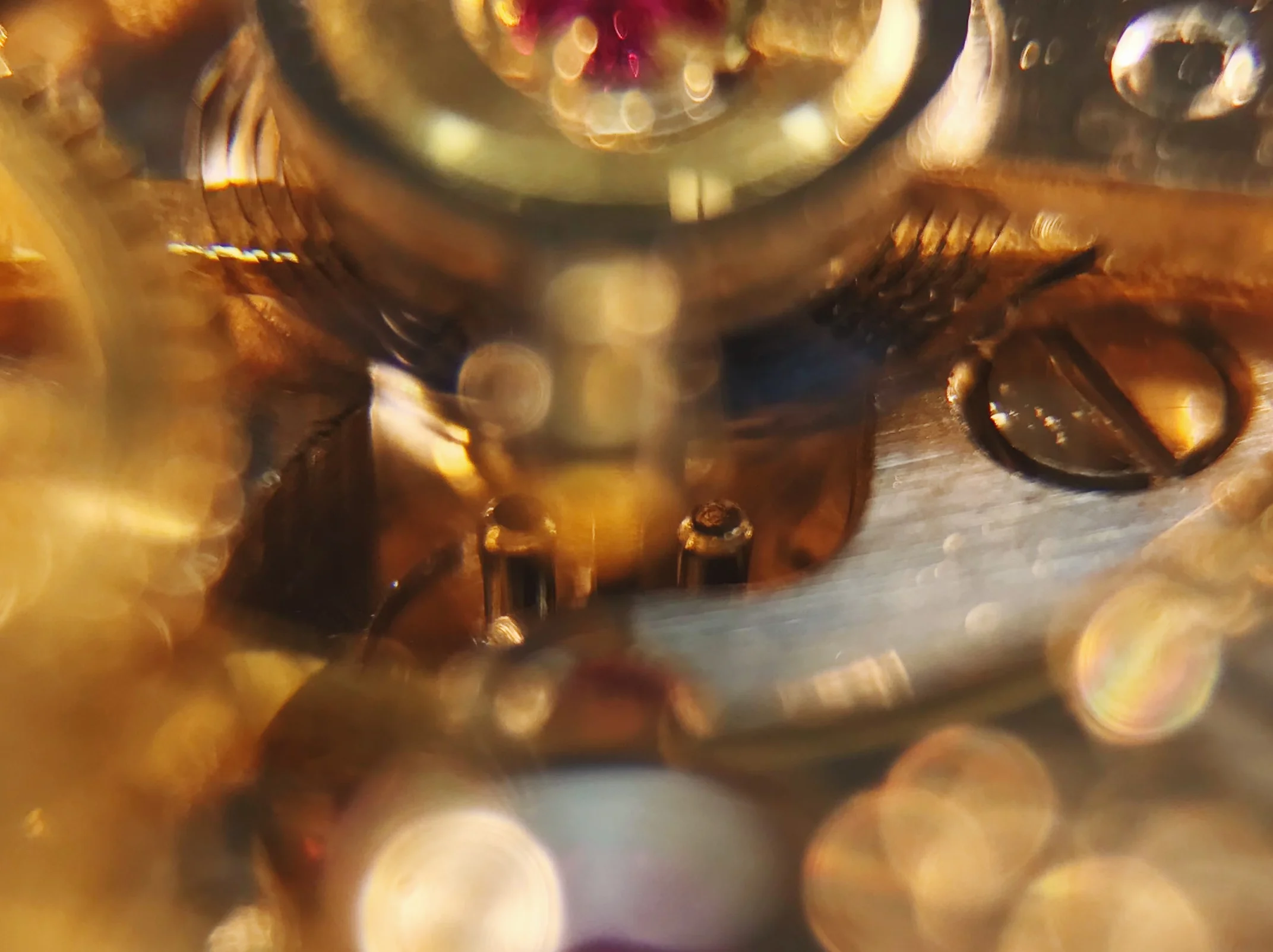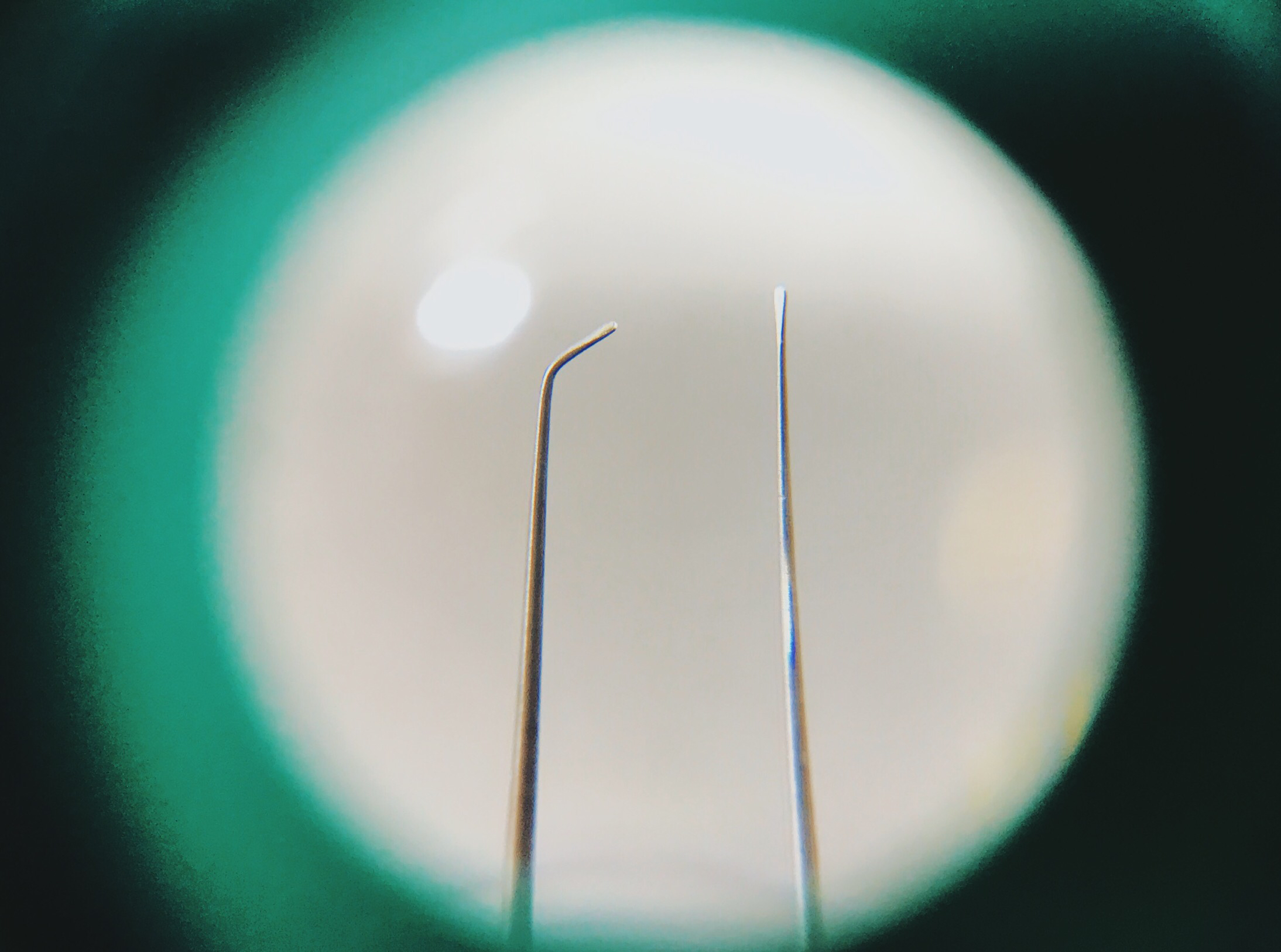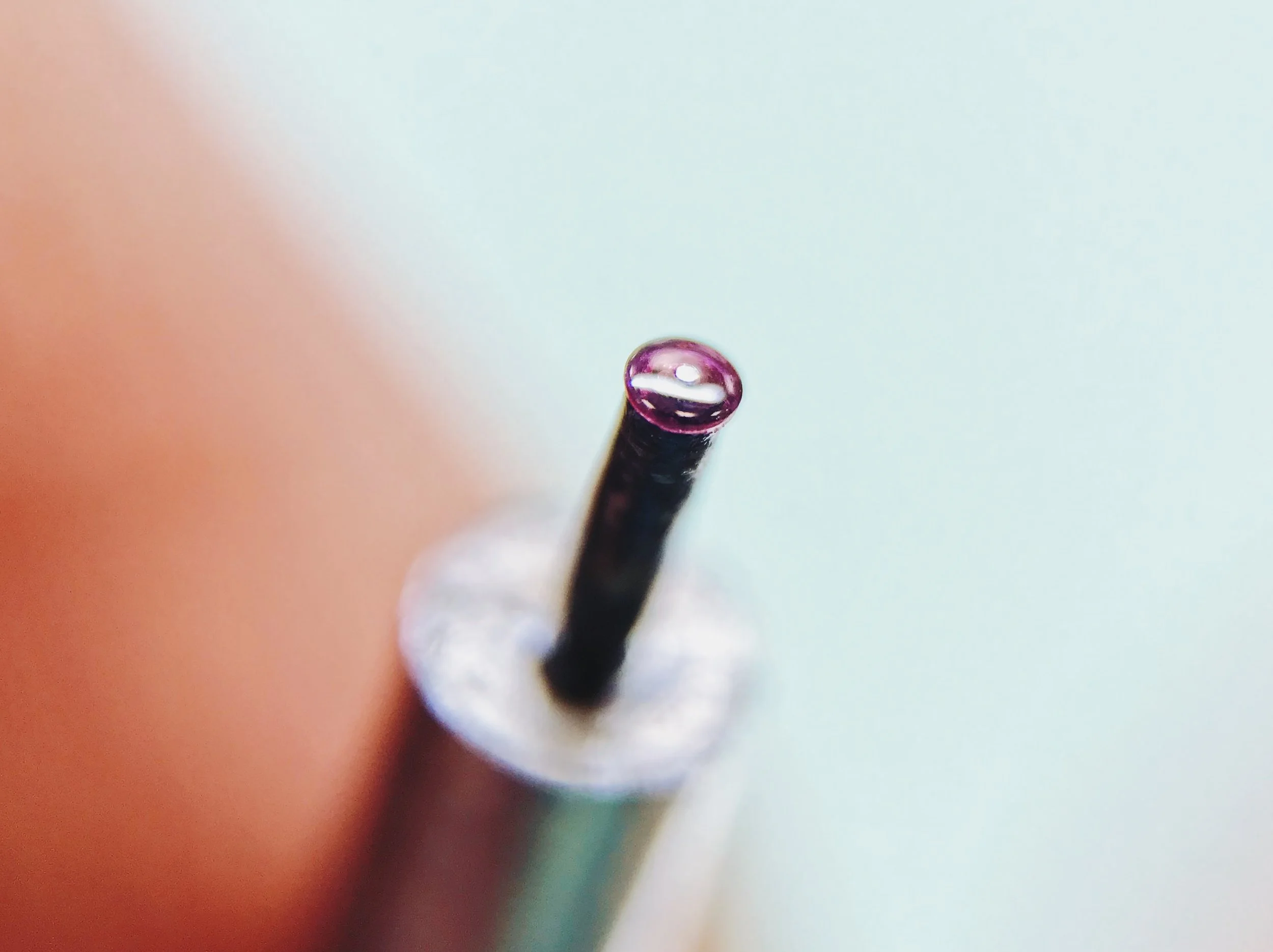Vintage Beat Error Adjustment

Eliminating (or minimizing) beat error is critical step in the timing and service of a watch, but older watches don't make it easy.
The beat error is the difference in milliseconds between impulses of the pallet fork—that is, the difference in time between the tick and the tock. A properly-adjusted escapement will have zero beat error, and the balance will have equal impulses on both its ascending and descending supplementary arcs.
The pallet fork is hard to see beneath the balance, but you can clearly see that it is resting towards one banking pin more than the other.
To eliminate beat error, the balance impulse jewel must be in the middle of the pallet fork's notch and centered between the banks, along the line of center, at the hairspring's dead point (when it is neutral and neither wound or unwound.
Modern watches have mobile stud arms, which will reposition the balance, and thus the impulse jewel, in respect to the pallet. Older watches, like this vintage Bulova 10BUC, have fixed studs and have to be adjusted the hard way, by rotating the collet of the hairspring on the balance staff.
We made a tool just for this task almost a year ago as a micromechanics exam. My balance tack has become a bit tarnished with use, and I added a spring for simplified clamping, but it works brilliantly. The tool's cone centers into a screw recess in the balance cock, allowing the balance to hang free and give access to the collet.
To change the beat error, insert an oiler through the hairspring and into the slot of the collet, and gently turn it while holding the balance steady with a soft tweezer. It takes a lot of experience and practice to know just how much to turn—it doesn't take much.
Blue steel hairsprings like this Bulova's are extremely thin and can bend just from the weight of the balance wheel, so it's important to keep them supported by a soft tool at all times. Despite my efforts, this hairspring was slightly bent from by adjustment, and will need to be straightened.
Almost perfectly centered.
With the balance back in the watch, the beat error can be reassessed on the timing machine. I was able to reduce the error from 2.0 ms to about 0.5 ms. That's not a perfect adjustment, but simply repositioning the hairspring at the stud can eliminate the rest of the error, so the rest of the process can be adjusted in the watch.
Watchmaking student at the Lititz Watch Technicum, formerly a radio and TV newswriter in Chicago.











